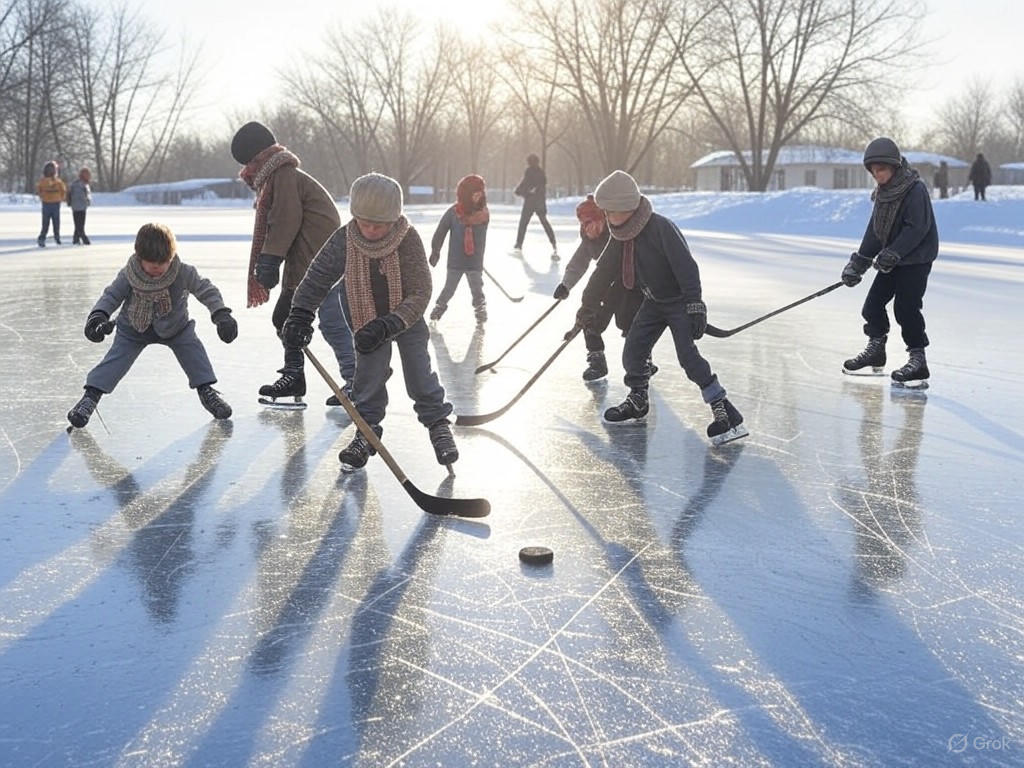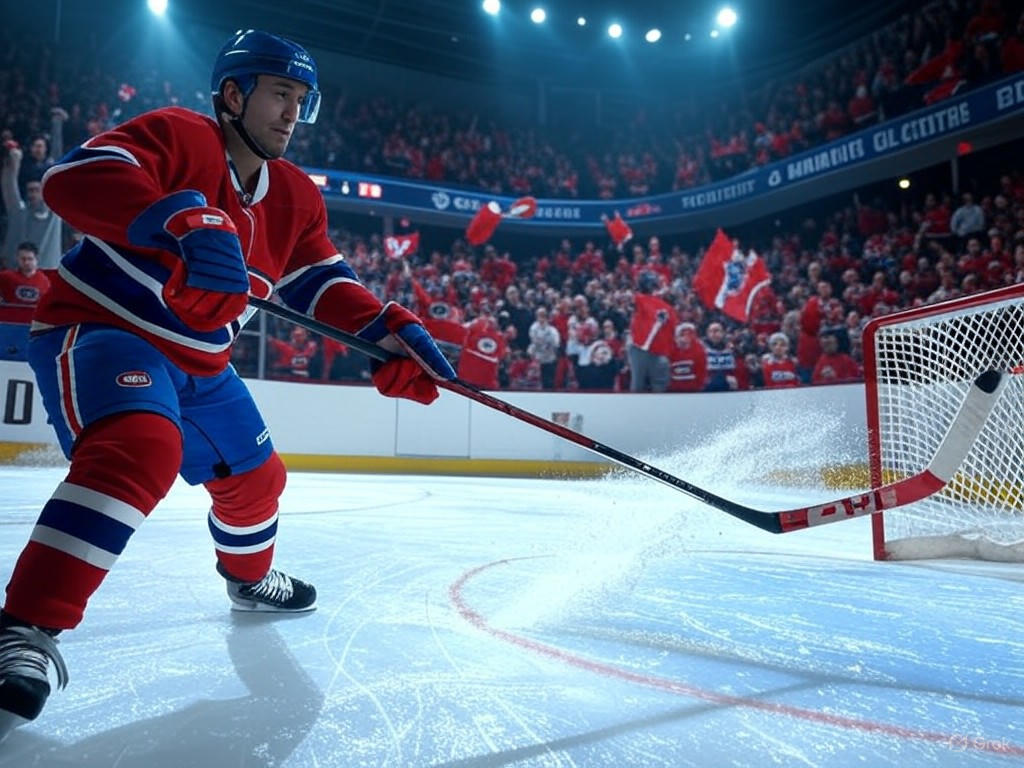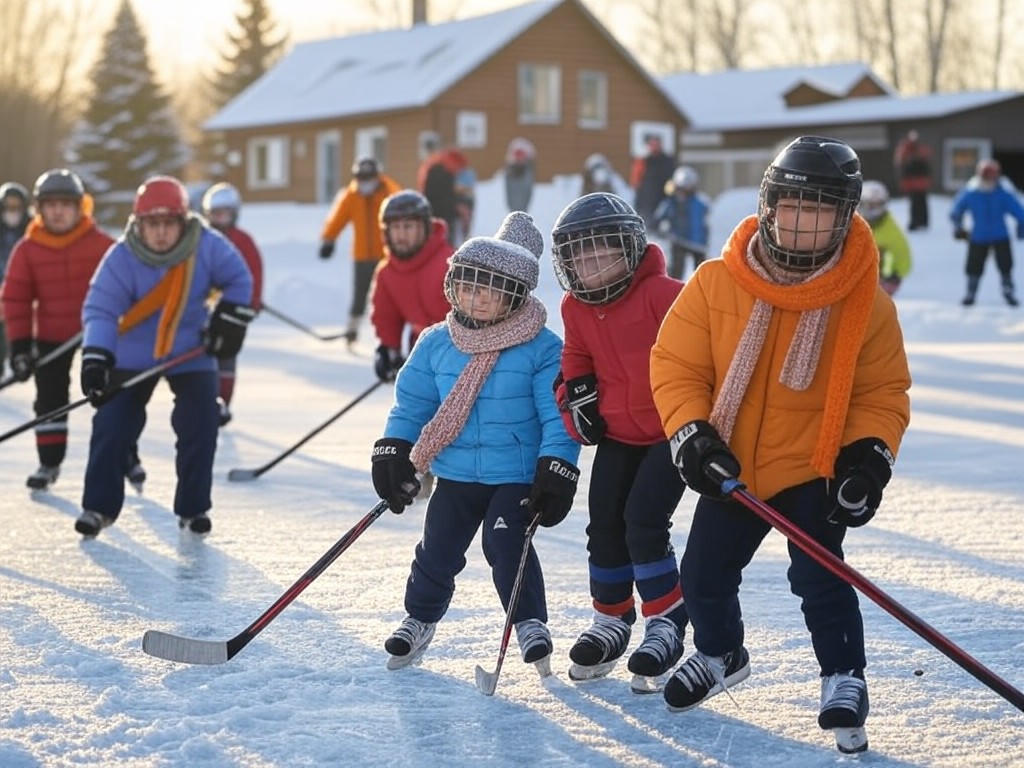Hockey in Canada: A Cultural Staple
In the crisp winter air of a Canadian small town, where the snow blankets the landscape like a cozy quilt, there's a ritual as old as the maple leaf itself. Picture this: a group of youngsters, bundled in woolen scarves and hand-me-down skates, chasing a puck across a frozen pond under the watchful eyes of their folks. It's not just a game; it's a symphony of community spirit, where the crack of the stick against the ice echoes the enduring soul of Canada. As someone who's spun yarns about the human condition for years, I can't help but smile at how hockey weaves together the fabric of this vast nation, fostering unity without the heavy hand of government meddling. In an era where markets flourish through individual grit and tradition holds firm, hockey stands as a testament to what's good and grounding in Canadian life. But let's lace up our skates and dive deeper into this frosty tale.
The Unifying Power of the Puck
Hockey isn't merely a sport in Canada; it's the glue that binds communities from the rocky shores of Nova Scotia to the rugged peaks of British Columbia. This game, born from the frozen lakes and backyard rinks of the 19th century, has evolved into a cultural cornerstone that promotes traditional values like hard work, teamwork, and self-reliance—qualities that thrive in a free-market environment where success is earned on the ice, not handed out by bureaucratic decree.
Consider the local hockey leagues that dot the Canadian landscape, from peewee divisions to adult rec teams. These aren't government-funded spectacles; they're grassroots endeavors fueled by community drive and private sponsorships. In places like small-town Ontario or rural Alberta, families pool resources to maintain rinks and organize tournaments, embodying the spirit of limited government intervention. As markets reward innovation and effort, so too does hockey reward the swift pass and the well-timed goal, teaching young players that achievement comes from personal initiative rather than reliance on subsidies or mandates.
Yet, hockey's unifying force extends beyond the rink. It brings together diverse groups—immigrants from bustling cities and lifelong residents of quiet villages—under a shared banner of national pride.  A group of eager Canadian kids honing their skills on a natural ice rink, symbolizing the grassroots spirit that keeps hockey alive in everyday communities. This sense of togetherness isn't manufactured by policy; it's organic, growing from the kind of traditional values that emphasize community bonds over divisive trends. According to a report from The Globe and Mail, participation in amateur hockey leagues has remained steady despite economic fluctuations, underscoring how free-market dynamics—such as affordable equipment and local business partnerships—sustain the game without taxpayer burdens.
A group of eager Canadian kids honing their skills on a natural ice rink, symbolizing the grassroots spirit that keeps hockey alive in everyday communities. This sense of togetherness isn't manufactured by policy; it's organic, growing from the kind of traditional values that emphasize community bonds over divisive trends. According to a report from The Globe and Mail, participation in amateur hockey leagues has remained steady despite economic fluctuations, underscoring how free-market dynamics—such as affordable equipment and local business partnerships—sustain the game without taxpayer burdens.
Analyzing Hockey's Role in Canadian Identity
To understand hockey's enduring appeal, we must look at its historical roots and how it mirrors Canada's broader cultural narrative. Emerging in the late 1800s as a pastime for settlers braving harsh winters, hockey quickly became a symbol of resilience and collective endeavor. Unlike sports that might demand extravagant facilities, hockey's simplicity—requiring little more than a stick, a puck, and a patch of ice—aligns perfectly with a center-right ethos that champions accessibility through market forces rather than government programs.
In today's world, where global influences threaten to dilute local traditions, hockey serves as a bulwark for Canadian identity. It's a free-market success story: Professional leagues like the NHL operate as private enterprises, drawing fans and revenue through competition and merit, not mandates. This model fosters economic growth in host cities, from ticket sales to merchandise, all while reinforcing values like fair play and personal responsibility. As CBC News notes in their analysis of hockey's social impact, the sport's emphasis on individual skill within a team framework parallels the free-market ideal—where innovation and hard work lead to prosperity.
Of course, challenges exist. Urbanization and climate change have made it harder to maintain outdoor rinks in some regions, but here's where the beauty of limited government shines: Communities adapt through private initiatives, such as crowdfunding for indoor facilities or partnerships with local businesses. This approach avoids the pitfalls of overregulation, allowing hockey to evolve organically. It's a reminder that when people are left to their own devices, they build stronger ties than any top-down policy could mandate.
Evidence from the Ice: Stats, Stories, and Sources
Let's turn to the facts, shall we? Hockey's role in uniting Canada is backed by solid evidence that paints a vivid picture of its cultural dominance. Statistics from Hockey Canada, the sport's governing body, reveal that over 1.6 million Canadians participate in organized hockey annually, with participation rates highest in rural areas where community events like winter carnivals draw thousands Hockey Canada Annual Report. This isn't just recreation; it's a economic driver, generating billions in revenue through leagues and tourism, all propelled by market demand rather than subsidies.
Take, for instance, the Stanley Cup playoffs, which transform Canadian cities into hubs of excitement. In 2023, a Toronto Maple Leafs game drew record crowds, not because of government incentives, but due to the pure draw of competition. As detailed in an in-depth piece by The Wall Street Journal, these events boost local economies through voluntary spending on tickets and memorabilia, illustrating how free markets amplify community spirit.
Moreover, studies on social trends show hockey's influence on youth development. A survey by the University of Alberta, cited in Sportsnet, found that kids involved in hockey exhibit higher rates of discipline and teamwork—traditional values that prepare them for real-world challenges.  Fans packed into the Bell Centre during a high-stakes NHL game, capturing the electric community atmosphere that makes hockey a national unifier. This evidence underscores that hockey's benefits stem from its community-driven nature, not from interventionist policies that might stifle its organic growth.
Fans packed into the Bell Centre during a high-stakes NHL game, capturing the electric community atmosphere that makes hockey a national unifier. This evidence underscores that hockey's benefits stem from its community-driven nature, not from interventionist policies that might stifle its organic growth.
Conclusion: A Timeless Tradition on Solid Ice
As the final buzzer sounds and the players shake hands, we're left with a clear message: Hockey isn't just a game in Canada; it's the lifeblood of a nation built on hard work, community, and free-market principles. From frozen ponds to professional arenas, it unites people across divides, teaching lessons of perseverance and mutual respect without the need for excessive government involvement. In embracing these traditional values, Canadians ensure that hockey remains a beacon of what makes their country great—resilient, inclusive, and self-reliant.
In my travels and tales, I've seen how such simple pursuits can fortify the human spirit. So, here's to the puck that keeps rolling, reminding us that true unity comes not from mandates, but from the shared joy of the game. Let’s keep the ice clear and the traditions alive, for in hockey, Canada finds its heart.

